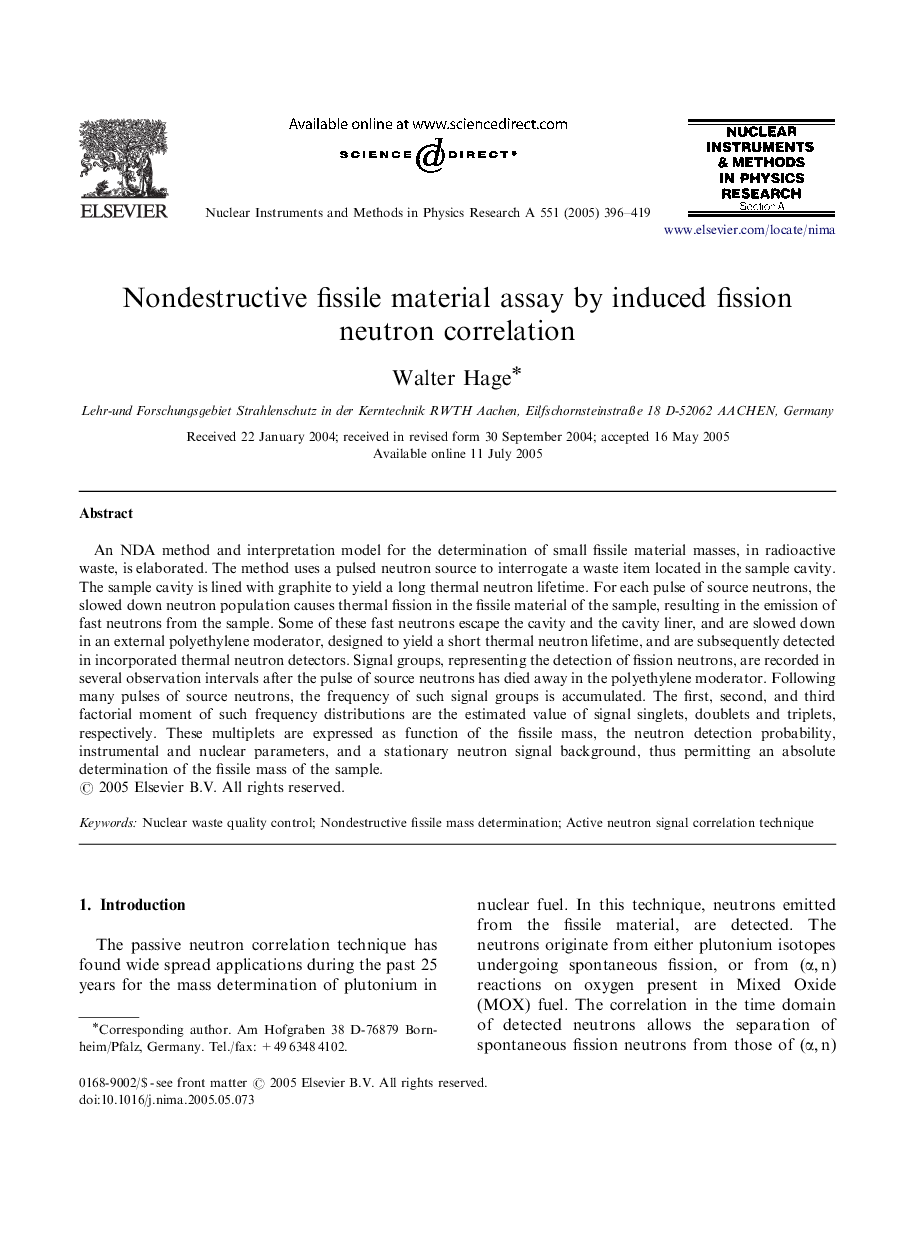| Article ID | Journal | Published Year | Pages | File Type |
|---|---|---|---|---|
| 9845083 | Nuclear Instruments and Methods in Physics Research Section A: Accelerators, Spectrometers, Detectors and Associated Equipment | 2005 | 24 Pages |
Abstract
An NDA method and interpretation model for the determination of small fissile material masses, in radioactive waste, is elaborated. The method uses a pulsed neutron source to interrogate a waste item located in the sample cavity. The sample cavity is lined with graphite to yield a long thermal neutron lifetime. For each pulse of source neutrons, the slowed down neutron population causes thermal fission in the fissile material of the sample, resulting in the emission of fast neutrons from the sample. Some of these fast neutrons escape the cavity and the cavity liner, and are slowed down in an external polyethylene moderator, designed to yield a short thermal neutron lifetime, and are subsequently detected in incorporated thermal neutron detectors. Signal groups, representing the detection of fission neutrons, are recorded in several observation intervals after the pulse of source neutrons has died away in the polyethylene moderator. Following many pulses of source neutrons, the frequency of such signal groups is accumulated. The first, second, and third factorial moment of such frequency distributions are the estimated value of signal singlets, doublets and triplets, respectively. These multiplets are expressed as function of the fissile mass, the neutron detection probability, instrumental and nuclear parameters, and a stationary neutron signal background, thus permitting an absolute determination of the fissile mass of the sample.
Related Topics
Physical Sciences and Engineering
Physics and Astronomy
Instrumentation
Authors
Walter Hage,
